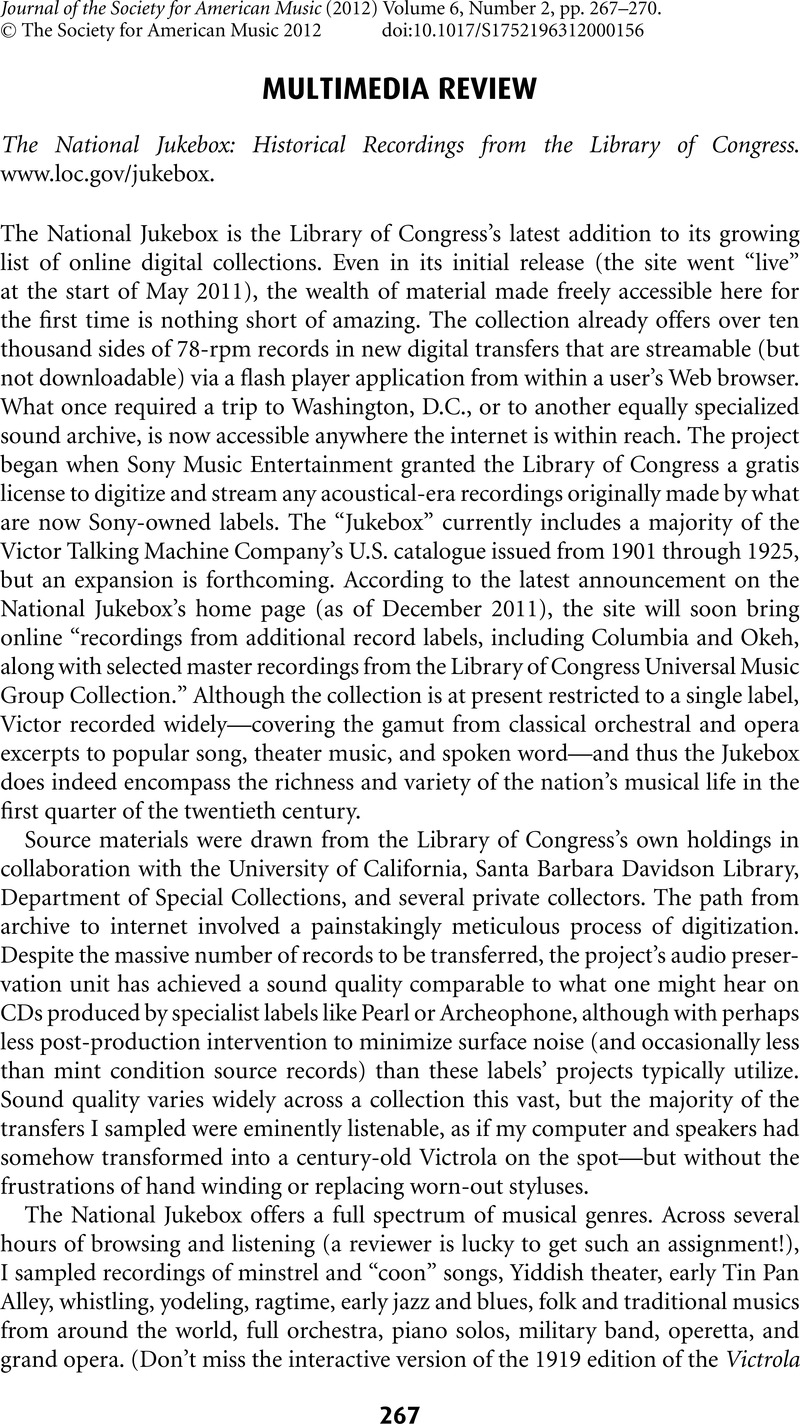Published online by Cambridge University Press: 09 May 2012

1 This information comes from the Encyclopedic Discography of Victor Recordings, another part of UC Santa Barbara's contribution to the collaboration. The catalogue is online and searchable separately at http://victor.library.ucsb.edu/.
2 This same limitation plagues multi-record sets. For example, the four movements of an abridged recording of Mozart's “Jupiter” Symphony are all on separate pages. A search for the keywords “Mozart Jupiter” places the sides at the top of the results list, but the movements are listed out of order. More attention to the unity of those few recordings of larger-scale works from this period would be most welcome.
3 See the Virtual Gramophone, www.collectionscanada.gc.ca/gramophone/index-e.html; Gallica, http://gallica.bnf.fr/editors?type=soundrecordings&lang=EN; and CHARM, www.charm.kcl.ac.uk/sound/sound.html. Both the Virtual Gramophone and CHARM permit the downloading of their audio transfers as digital files, unlike Gallica and the National Jukebox, which only allow online streaming. The Canadian site is by far the smallest collection and CHARM is only half the size of the National Jukebox; Gallica includes all varieties of digital media, not just audio transfers. Whereas the National Jukebox is currently only authorized to digitize records from Sony Music–owned labels, the relatively looser copyright regulations outside of the United States allow for a wider range of materials in these other collections.
4 The concept of a “jukebox” as a machine that can play many different records on demand accompanied the advent of the electrical recording process and audio amplification, whereas the present so-called National Jukebox includes records from the acoustical era only (hence the 1925 cutoff date).